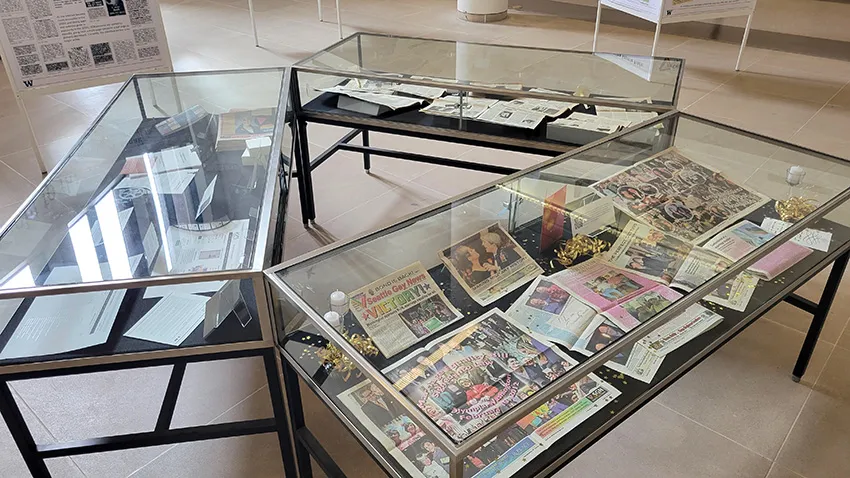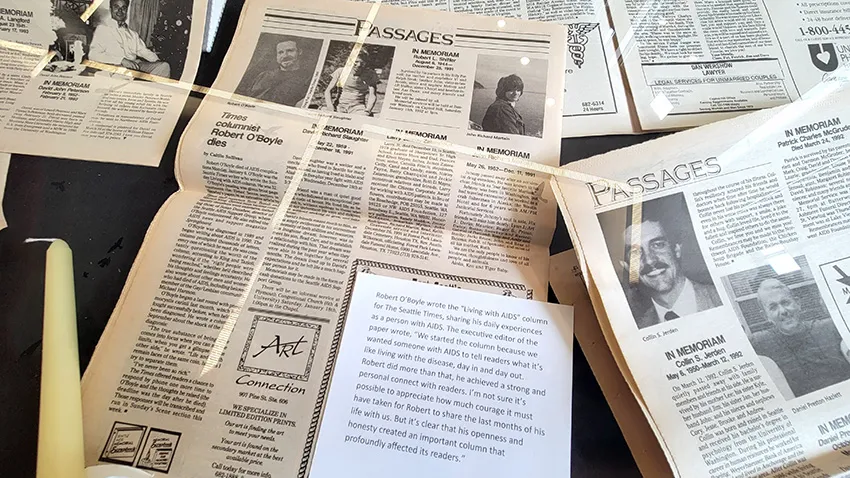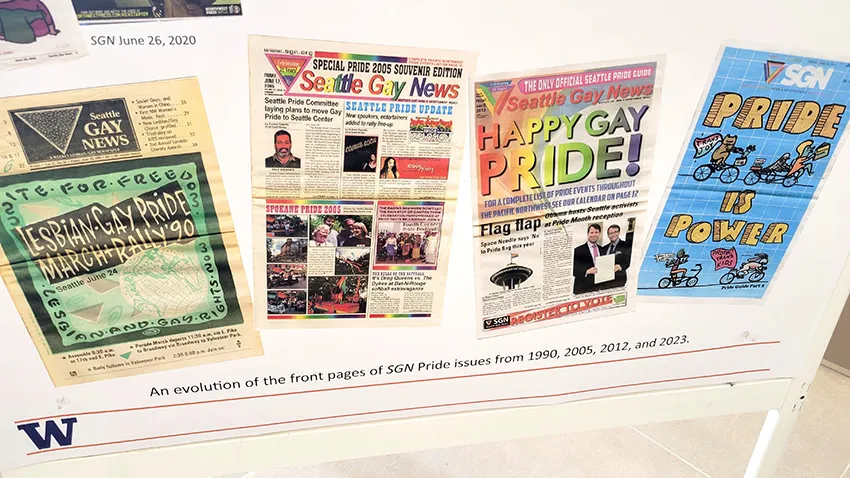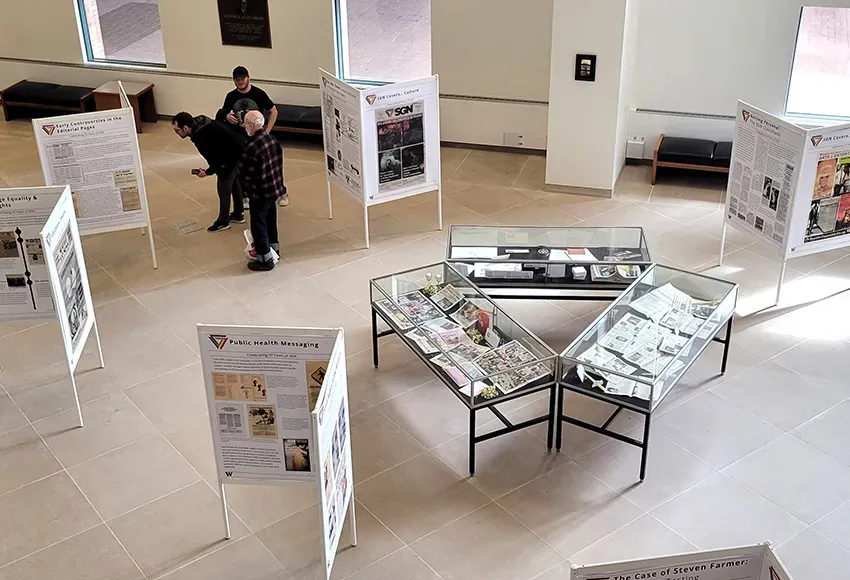Seattle Public Library to host exhibit of the newspaper's legacy, with a free public reception on June 27
The year was 1974, and Seattle's Queer community was more freely coming into its own. The City of Seattle banned employment and housing discrimination against sexual minorities the previous year, and Seattle's first Gay Pride Week was to be held.
Milestones like these helped unleash the unapologetically out and proud LGBTQ community in the Emerald City – and this was literally put on paper when the Seattle Gay News debuted, also in 1974, first as a publication of the Gay Community Center, also founded that same year. The SGN's staying power has led to it become among the country's longest-lasting LGBTQ printed publications.

Now new generations can witness the SGN's odyssey in an exhibit opening June 24 and running for a month at the Seattle Public Library's Central Library downtown. "Celebrating 50 Years of the Seattle Gay News" features issues of the SGN going back to its earliest days and forward again, taking viewers on a journey through historic events that helped shape local Queer politics and culture.
A reception will be held at the library on Thursday, June 27, from 5 to 7 p.m. This event is free and open to the public and will feature SGN staff, LGBTQ community leaders, and dignitaries, including Mayor Bruce Harrell.
Starting with the origins of the SGN, the exhibit is organized around pertinent topics, such as legal rights, Gays in the military, marriage equality, the AIDS crisis, and much more. Pages from the paper are shared through a combination of enlarged reproductions on informative placards and actual issues in glass cases. Visitors can roam freely and experience the displays at their leisure.
Rescuing history
The exhibit made its public debut this past April at the University of Washington's Allen Library. How this came about goes back to the COVID years. After the sudden death of SGN publisher and owner George Bakan on June 7, 2020, then-SPL Executive Director Marcellus Turner read a story online about efforts germinating to archive the paper. The story featured a concerning photo that propelled Turner to contact the University of Washington Libraries.
UW Libraries News Librarian Jessica Albano, who created the exhibit, recalled this moment that sparked what would become a years-long project to archive all five decades of the SGN.
"The story showed piles and piles of SGNs stacked outside, under George's carport," she said, "and how they were trying to collect it, preserve it, and distribute it to libraries," thus rescuing the stacks from ruin or discard.

This led to a multi-institutional network that included UW Libraries, the Seattle Public Library, the Museum of History and Industry, the Seattle Municipal Archives, and the Washington State Library, as well as SGN staff and Bakan's daughter, Angela Cragin, who inherited the paper. Meetings were held monthly.
All the newspapers from Bakan's storage units were gathered and delivered to the team's meeting space for volunteers from the community and the library to sort for eventual distribution to archives across the country, so that multiple institutions would keep a print run of the collection.
The most complete set went to the SGN, and the second most complete went to UW Libraries. More were sent to Yale University and the Stonewall Museum in Florida, among others. The Seattle Public Library has two sets, one kept on shelves for the public to peruse and another kept safely in a closed archive.
UW Libraries continued to microfilm each issue through 2020 – all 1,745 of them – and all are available free online through the Washington State Library's Washington Digital Newspapers website (https://bit.ly/3L01oQl).

Albano said she worked with UW Libraries student employees to go through every issue and compare it to microfilm that the UW had already created from editions of the paper it had previously.
"We were able to find things that were missing from the microfilm. There are issues that we may not have had when we filmed it the first time that we now have in print," she said. "We still have more we're trying to do, because we have some issues that we don't have any copies of."

For posterity and pride
Albano expressed special gratitude for longtime SGN staff member Rick McKinnon for his invaluable and ongoing help. She continues working with him to find still-missing editions, so that UW Libraries can have a complete run on microfilm, then digitize those through the Washington State Library for a complete online collection.
"He is such a great guy," Albano said of McKinnon. "He's just relentless in such a positive way. He's determined to help us get a complete run, and I really appreciate it. He is such a good networker on our behalf."
It was McKinnon who reached out to the Seattle Public Library to tell them about the exhibit at the UW's Allen Library, which prompted the city's library to ask if they could show it too.
Albano said that with the demise of newspapers across the country, her vision is that the SGN archives will be there for posterity as a source of information, reflection, and pride for LGBTQ generations to come.
"Every time I work with a local community newspaper, I learn the value in local publications and how they tell the story not just of the general community in the Seattle area. If they are publications for and by a specific group, they are invaluable for documenting what happened, the good and the bad, the photographs in them showing the people...," she said.
"The SGN is important and unique. With the work we're doing, I'm hoping that 50 years from now, someone will pull out SGNs from today. That's my hope."
The exhibit opens on June 24 at the Central Library (1000 Fourth Ave., downtown) and runs through August 25. A free public reception will be held Thursday, June 27, from 5 to 7 p.m.


